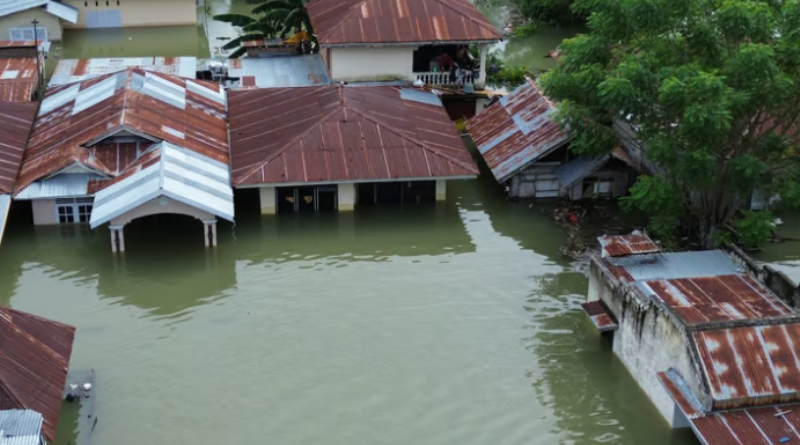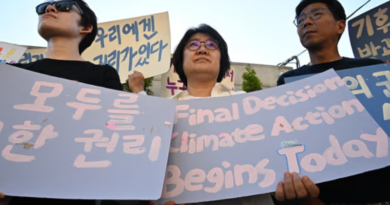New climate finance goal: Technical dialogue commences in Azerbaijan, heated debates expected
The third round of technical and political discussions of the year on the new climate finance target will be held in Baku from September 9-12, 2024
Parties to the United Nations Framework Convention on Climate Change (UNFCCC) are meeting to discuss the New Collective Quantified Goal on climate finance (NCQG) in Baku, Azerbaijan from September 9-12, 2024.
Parties met to discuss the goal previously at the mid-year climate conference held in Bonn, Germany in June 2024. The talks in Baku will comprise the 11th Technical Expert Dialogue (TED) and the third meeting under the Ad Hoc Work Programme (AHWP) on NCQG.
Countries are expected to reach consensus on the new climate finance goal at the 29th Conference of Parties to UNFCCC (COP29) in November 2024. This round of talks in Baku is crucial to pave the way for an ambitious and timely outcome.
NCQG, a new target for climate finance, is supposed to be the successor to the $100 billion per year commitment of developed countries for providing climate finance to developing countries.
Towards a draft negotiating text
The talks in Baku will begin with the 3rd AHWP meeting, during which delegates will deliberate on the input paper provided by the co-chairs of the meeting. Parties are hoping to enter COP29 with a draft negotiation text, through various iterations of input papers by the co-chairs, reflecting the various rounds of discussions through the year.
This is the text that will eventually establish the details of the new climate finance target, and thus, each iteration presents a critical juncture for discussion on the road to COP29.
The 2nd AHWP meeting was conducted in Bonn, Germany in June 2024. The input paper presented by co-chairs towards the end of the Bonn talks was met with strong disappointment by developing country groups. They had pointed out that the text did not adequately reflect the options for the finance goal given by developing countries, and that it gave undue focus to the details of developed country suggestions.
In particular, the talks ended without consensus on the issues of the contributor base expansion and quantum (amount) of the goal. The new input paper provides an updated summary as well as a compilation of the various options for different elements of the goal that have been proposed by different country groups so far.
Discussions in the coming days will decide whether convergence among countries will lead to further narrowing down of options and clarity for the way forward.
Technical discussions likely to reveal divergences
After sessions on the 3rd AHWP, the agenda is to go into the 11th TED. Crafting a goal for climate finance is a complicated endeavour to say the least.
Different elements of the goal — the amount, how it should be reflected for contributors (absolute amounts or percentage of gross national income, GNI), if the list of contributors should be expanded and timelines for disbursal of funds — need to be defined well to arrive at an agreement. For enabling the same, UNFCCC has hosted 10 TEDs, focused on various elements and related issues over the last two years.
Prior to the latest TED, Parties made written submissions on elements of the NCQG needing more elaboration, or aspects where they may have changed their position.
As was seen at the Bonn talks, the longest deadlock was on the issue of the expansion of the contributor base: Developed countries have been demanding that the contributor base be expanded to reflect the changed economic realities of various countries today, whereas developing countries were clear that such a discussion had no place in NCQG negotiations and that no new responsibilities must be added onto developing countries as part of NCQG.
In the latest round, most notably, the submissions from Canada and Switzerland created a stir — for the first time they included detailed criteria for assessing whether a country should be included in the list of contributors to the new goal or not. This is interlinked with the question of the quantum, which various developing countries have asked to be in the range of $1-1.3 trillion per year.
Country positions at a glance
| Country | Latest position on contributor base expansion |
|---|---|
| Switzerland | In addition to developed countries committing a decided amount by 2035, other Parties must also contribute. Proposed criteria for these other Parties to be identified – “Parties which: i. are among the ten largest current emitters and have a purchasing power parity adjusted gross national income per capita of more than $22,000, and / or ii. have cumulative past and current emissions per capita of at least 250t CO2eq and a purchasing power parity adjusted gross national income per capita of more than $40,000” |
| Canada | Suggests newer countries must be included in existing contributors taking into account criteria such as per capita income and greenhouse gas emissions. For instance, those Parties can be included which – “have GNI per capita above $52,000 (PPP) or are top 10 emitters based on cumulative GHG emissions with $20,000 GNI per capita (PPP) |
| European Union | Lays emphasis on the global effort needed and growing economic capabilities to be reflected in the NCQG decision – “Also notes that the collective goal can only be reached if Parties with high GHG-emissions and economic capabilities join the effort, therefore they are expected to scale up climate finance towards the collective goal of providing and mobilising jointly $XX billion by 2035…” |
| USA | Support adding new contributing Parties, while existing contributors Parties continue to support developing countries. Open to discussing options for how to identify the (small number) of new contributors |
| Like Minded Developing Countries | Developed countries should provide finance to developing countries, not in favour of expanding the contributor base |
| African Group of Negotiators | Developed countries must provide and lead the mobilisation of finance for provision to developing countries; also mention the need to enable global investment flows for climate. |




